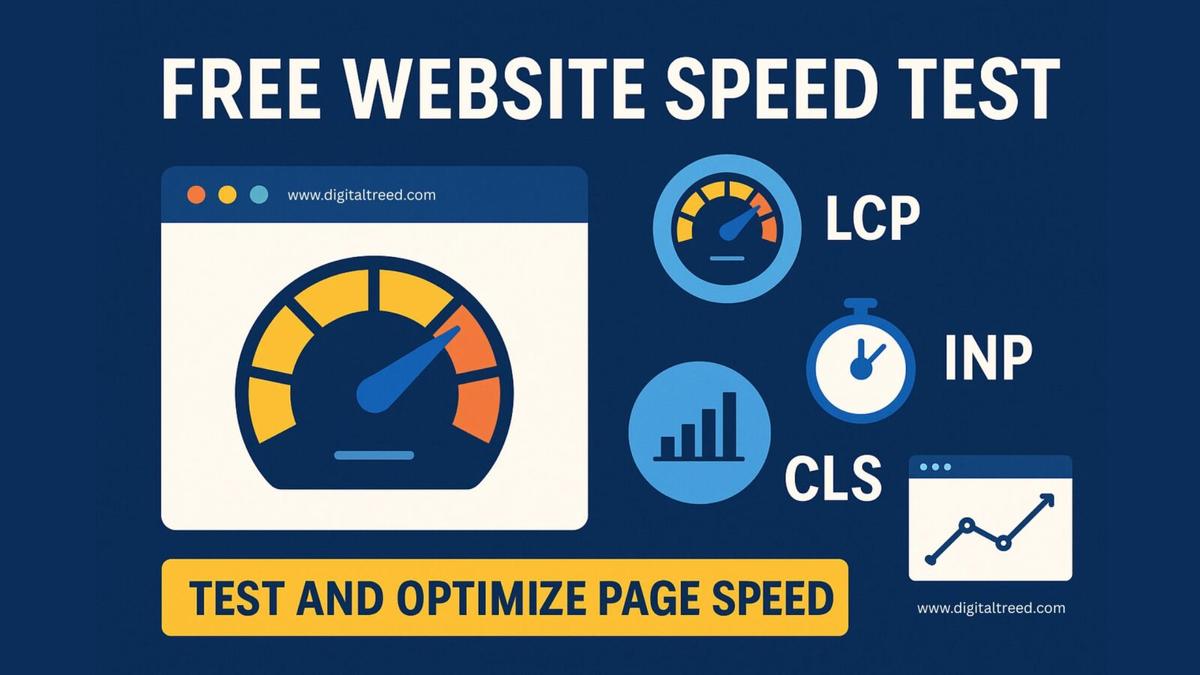Page Size & Load Time Estimator
Alright, so let’s just say it—if your website takes forever to load, nobody’s gonna stick around. Doesn’t matter how well-written your blog is or how pretty your landing page looks. People just bounce. It’s frustrating, but it’s also reality.
Honestly, I didn’t take speed that seriously at first either. But after watching a few ranking pages shoot ahead of mine—pages with worse content, mind you—I started digging deeper. And yeah, page speed? It’s a pretty big deal.
What’s a Website Speed Test, Really?
At its core, it’s just a tool that checks how fast your website loads and what’s slowing it down. But when you use a good one, like DebugBear or even Google’s web.dev, you get waaay more than just a load time number.
You get this full picture: what scripts are running, how your images are loading, if your server’s slow, and whether your content is getting shoved around while the page builds. Kinda like opening the hood of your car and seeing which part’s leaking oil.
Why Speed Matters for Content Creators
If you write online—blogs, landing pages, product descriptions, whatever—this part matters:
- Google uses speed to rank sites. Like, not in a vague “maybe-it-affects-you” way. It’s confirmed. They measure Core Web Vitals, and if you don’t do well, you drop.
- Slow pages kill conversions. Say someone clicks your article from Google, and it loads slow—they’re out. Back button. Just like that.
- People just don’t wait anymore. I don’t even wait. You probably don’t either. That’s the world now.
Core Web Vitals: The Metrics Google Actually Cares About
So yeah, there are three main ones Google watches like a hawk:
- LCP (Largest Contentful Paint) – This checks how long it takes for the main content to appear. Basically: is your page useful yet?
- INP (Interaction to Next Paint) – Measures how fast your site responds when someone clicks or taps.
- CLS (Cumulative Layout Shift) – Ever try to click something and the button jumps? That’s bad CLS.
These are not just geeky metrics. They impact rankings, traffic, and experience.
What You Learn When You Test
When you run a website speed test, especially with DebugBear, here’s the kinda stuff you’ll see:
- Waterfall charts (these are weird at first, but kinda addictive once you understand them)
- Exact load times for each resource—fonts, scripts, images
- Suggestions for how to fix stuff (like “this image is massive, compress it”)
Also, you can watch your site load step-by-step. It’s oddly satisfying.
Tools Compared (And Why DebugBear Feels…Smarter?)
I’ve used Google PageSpeed Insights a bunch. It’s good. But it kinda feels like it’s guessing sometimes. DebugBear? It throttles connections in a way that actually mimics what users experience. And it gives you actual data, not just “scores.”
Here’s how it stacks up:
- PageSpeed Insights: Good, but often generic
- Pingdom: Feels a bit surface-level
- GTmetrix: Great lab tool, but doesn’t pull in Core Web Vitals data
DebugBear kinda blends all of it—with charts, historical tracking, and way more transparency.
Mobile vs Desktop – Big Differences
Let’s not pretend one test is enough. Speed varies a lot depending on:
- Device (phones are usually slower)
- Network (4G vs Wi-Fi = big difference)
- Viewport size (some content shifts on bigger screens)
Also, layout shift is worse on some mobile screens, especially if you’re using popups or sticky bars. I learned that the hard way.
Actual Tips That Help (Not Just Generic Advice)
When I first ran a test, I got back like 40 “opportunities.” But DebugBear doesn’t just dump that on you—it shows which ones actually matter.
Common issues I found?
- My HTML files were bloated from inline scripts
- CSS was blocking renders
- Unoptimized images were taking 5 seconds to show
Fixing even a few of these gave me a noticeable boost—not just in performance score, but in actual user time-on-site.
Want to See How You Stack Up?
Another thing I love: you can plug in any site. Competitors. Blogs you admire. Even that one affiliate site you know is outranking you unfairly.
Test them. Compare. See where they beat you.
Sometimes, it’s as simple as—you’ve got cool content, but they’re just faster.
Bonus Tools That Aren’t Just Hype
- TTFB (Time to First Byte): Measures how long your server takes to start loading stuff.
- NoScript Test: Turns off JavaScript to show how your site loads without all the extras.
- INP Debugger: Simulates clicks to see if your site is slow to respond (really helpful if your buttons or forms feel laggy).
Final Thoughts (Just Being Real)
If you’ve put in hours writing something, and your page is dragging its feet loading—it’s a waste. I hate to say it, but it is.
Speed is not something only devs need to care about anymore. Writers, marketers, bloggers—we’ve all got skin in the game now.
So yeah, test your page. Fix what’s slow. And don’t overthink it—you don’t need to be a tech genius to figure this out.
A faster site isn’t about bragging rights. It’s about actually getting your content seen.
